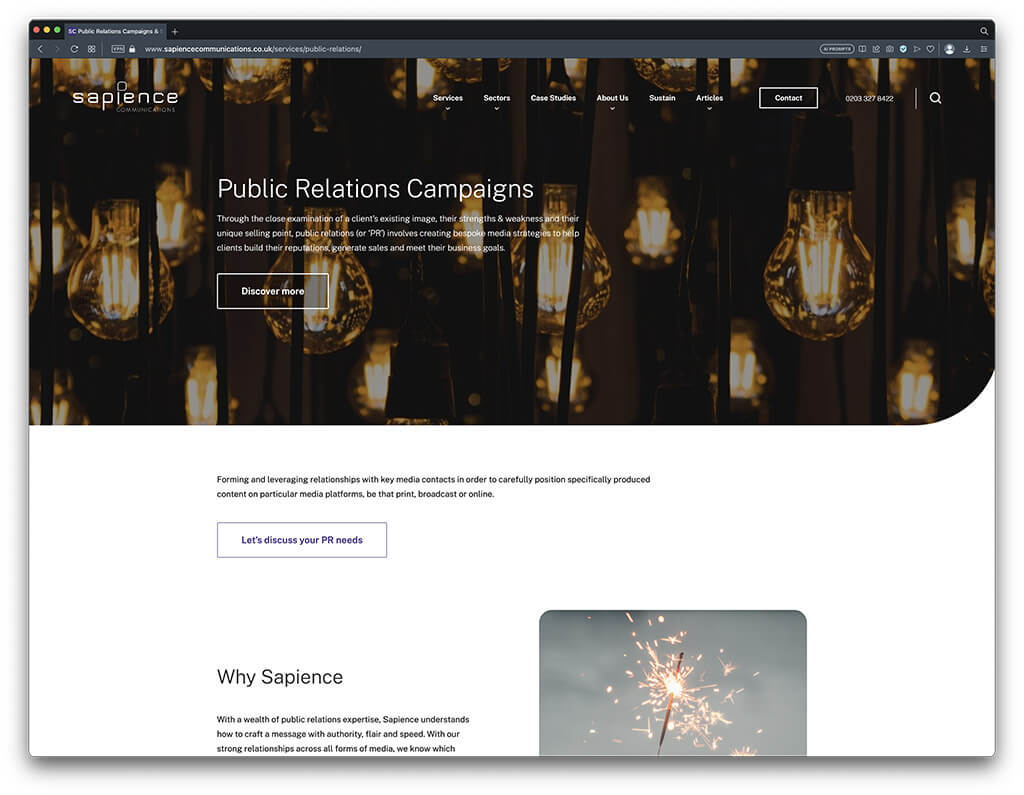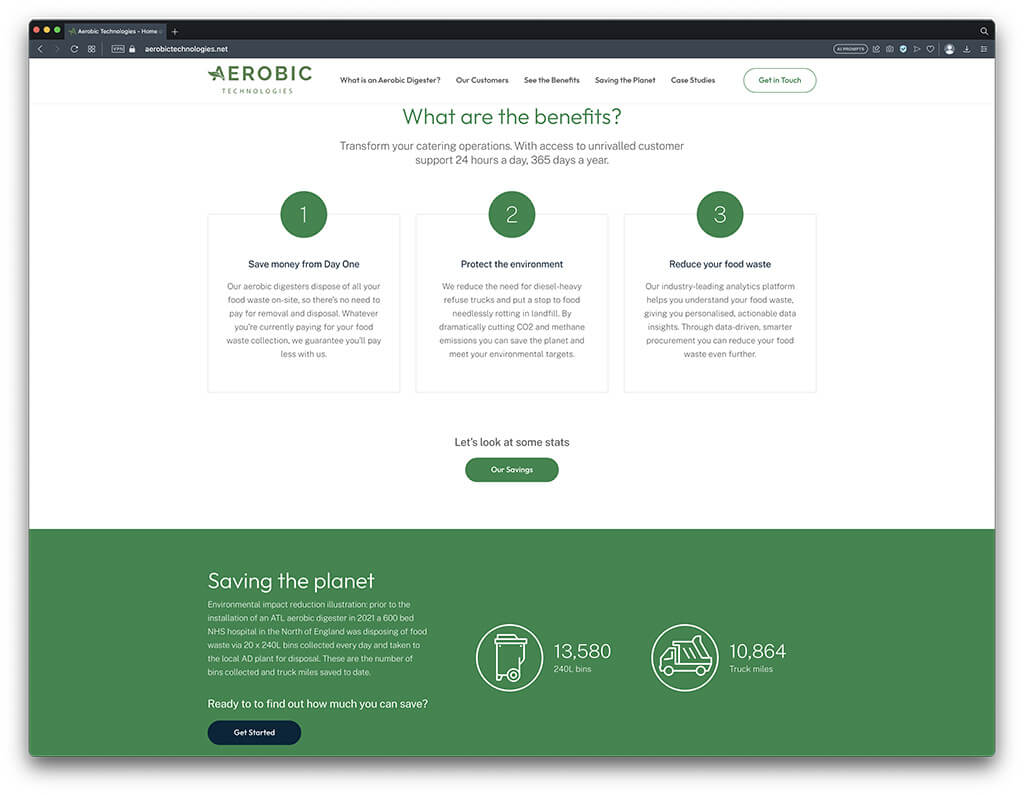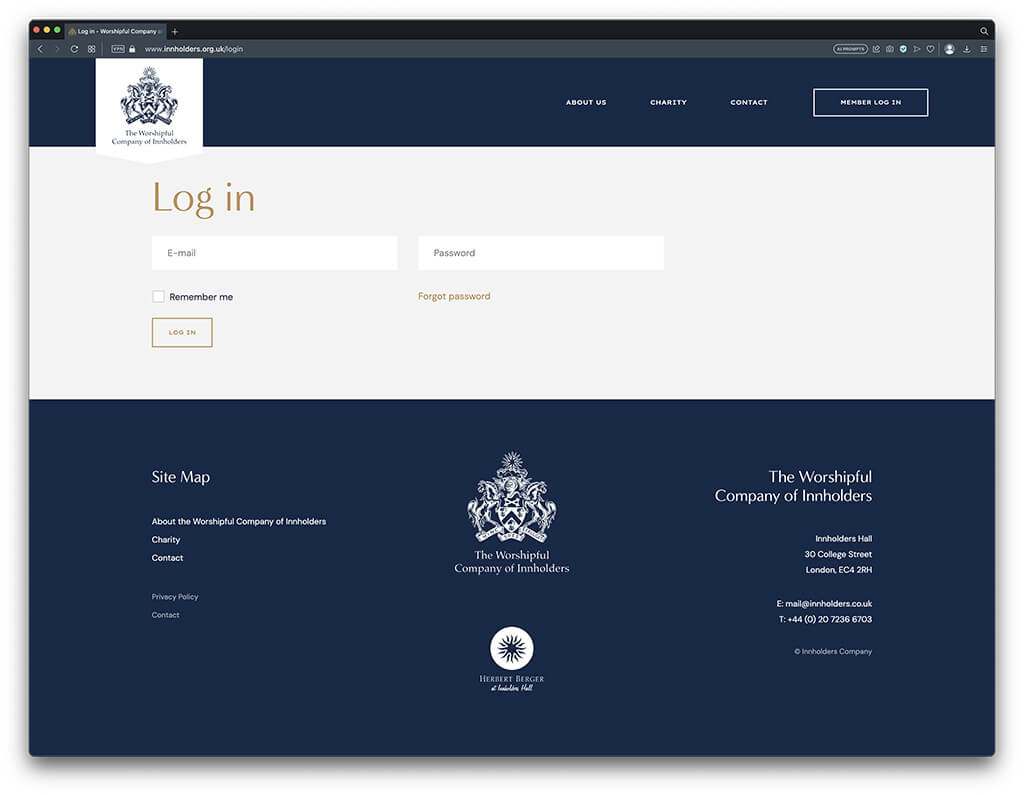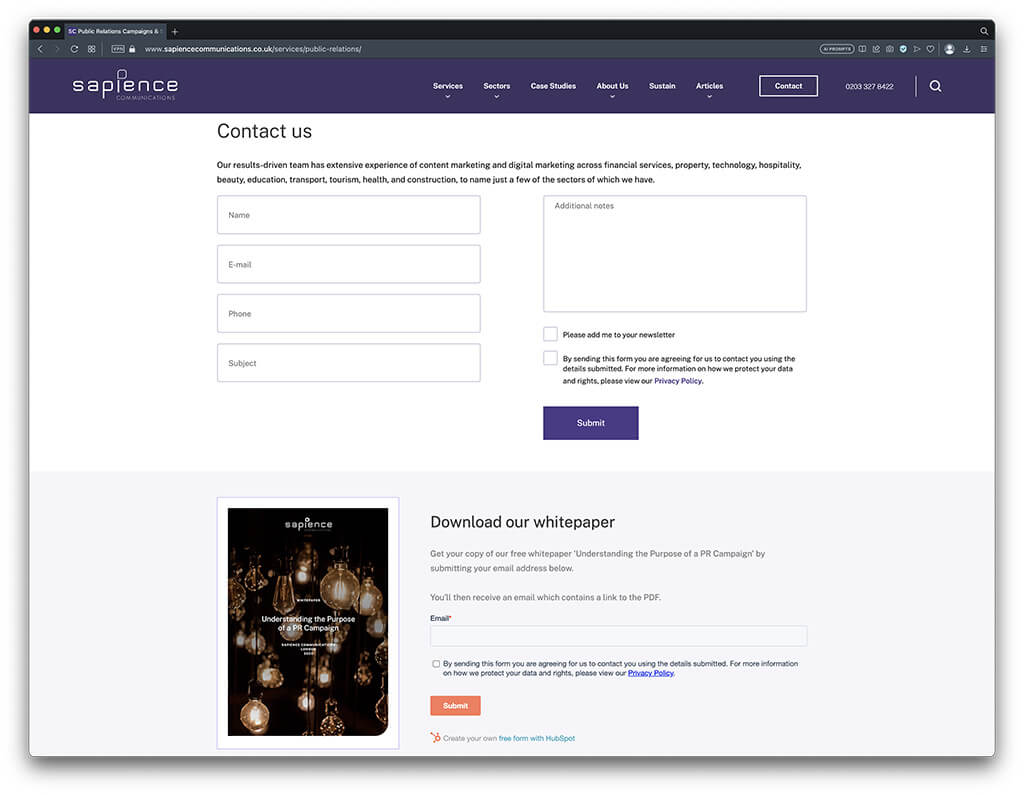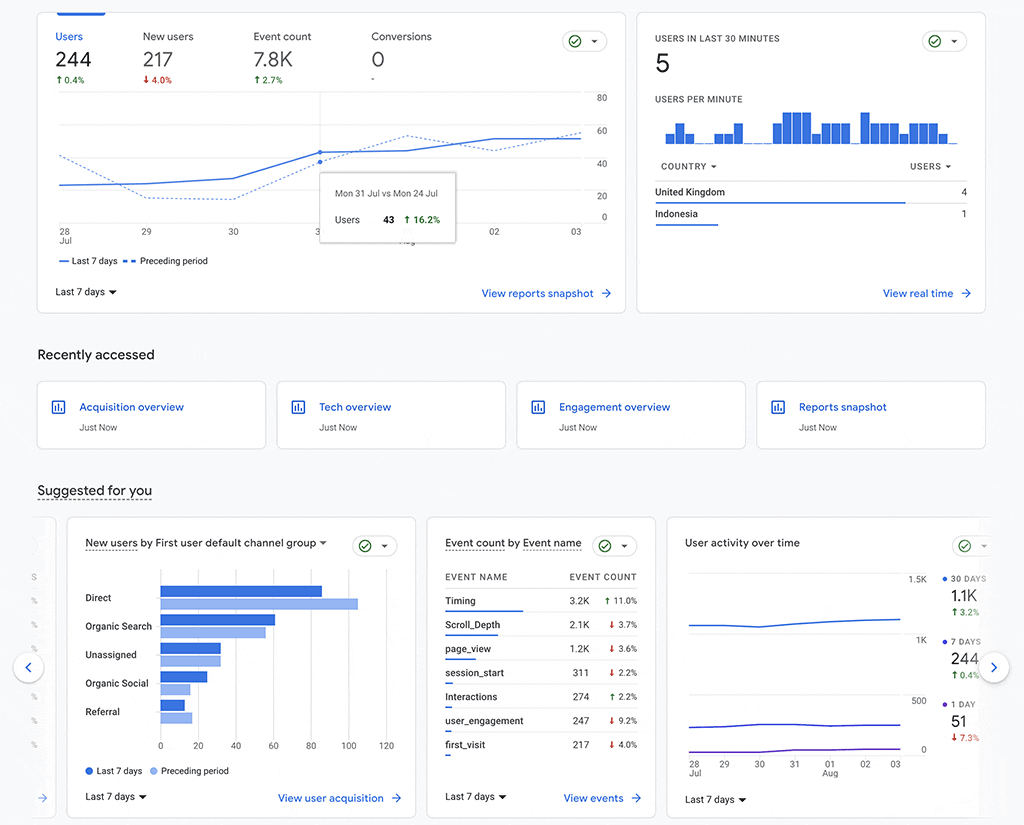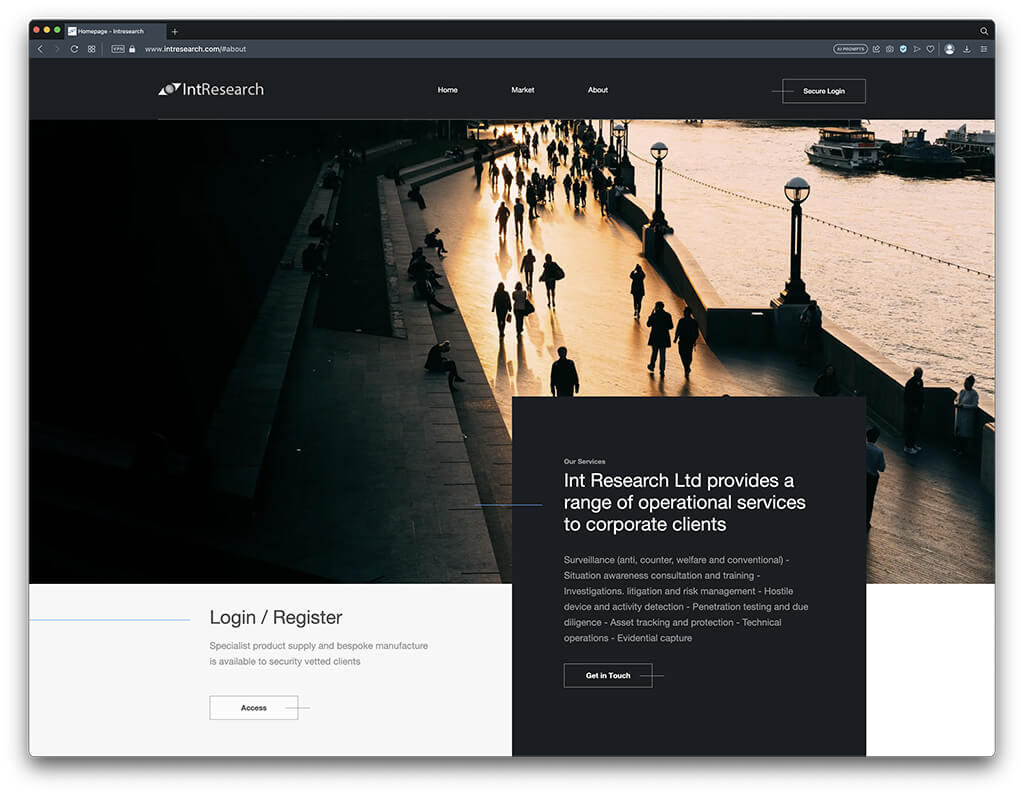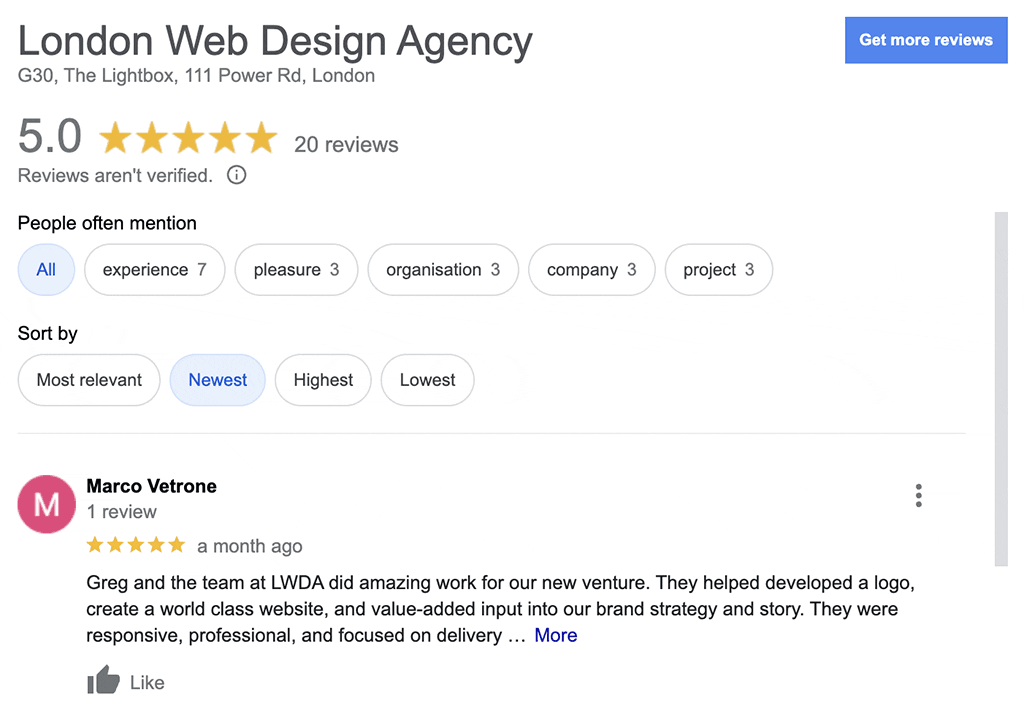
Article
What is B2B Web Development?
PUBLISHED:August 4, 2023
UPDATED:August 9, 2023
In the rapidly-evolving digital landscape, businesses are increasingly turning to online platforms to connect, collaborate, and conduct transactions. B2B web development, short for Business-to-Business web development, plays a pivotal role in shaping these platforms and the interactions between businesses.
This article delves into the fundamentals of B2B web development, exploring how it differs from traditional B2C (Business-to-Consumer) approaches and the unique challenges it addresses.
We’ll be looking into the key principles of designing & building a bespoke B2B website, the benefits of creating a great B2B platform, and the challenges faced by most B2B web projects.
So, without further ado, let’s start by answering the question, what is B2B web development?
What is Business-to-Business web development?
B2B web development refers to the process of creating and enhancing online platforms, websites, and applications that facilitate business-to-business interactions. It focuses on designing and building digital solutions tailored to meet the unique needs and requirements of companies engaged in commerce with other businesses.
The primary goal of B2B web development is to help businesses work smarter, not harder. It’s all about making their operations smoother, processes simpler, and collaborations with other companies successful. By using technology in clever ways, B2B web development improves how businesses interact with each other, making communication easier and workflows less complicated. In the end, B2B web development plays a vital role in giving organisations the power to thrive in the fast-paced online world while building strong, long-lasting partnerships with other businesses.
5 Key principles of B2B web development
From crafting user-friendly interfaces tailored to your clients, to seamlessly integrating business-specific features and ensuring robust security measures, these five key principles are fundamental to designing and maintaining effective B2B web platforms. By understanding and implementing these principles, businesses can unlock new growth opportunities, enhance customer satisfaction, and strengthen their position in the B2B marketplace.
Our top 5 principles for effective B2B web development are:
- Understanding the Target Audience
- Designing a User-Friendly Interface for Business Clients
- Integrating Business-Specific Features
- Delivering Enhanced Security and Data Protection
- Offering Seamless Communication and Collaboration
Let’s look at each of these in a little more detail…
Understanding the Target Audience
Understanding your target audience is a foundational principle in B2B web development. Thoroughly researching & understanding the needs and pain points of your potential clients is essential to creating a website with content that resonates with them and helps drive enquiries.
By analyzing industry trends and studying competitors, you can identify unique selling points and craft tailored solutions that address the requirements of your target audience.
Customizing your approach to web development based on the above points will help to establish a strong connection with potential clients, ultimately leading to increased engagement, conversions, and successful business relationships.
Designing a User-Friendly Interface for Business Clients
A user-friendly website interface is essential for business clients because it enhances their experience, increases efficiency and boosts engagement. A well-designed interface reduces the learning curve and cognitive load, positively impacting brand perception and delivering a competitive advantage.
It’s well-known that business clients are time-poor, often only checking websites that appear on the first page of Google SERPs and bouncing from websites that are hard to navigate or take too long to load. So, the easier you can make your website to navigate, the higher the chance that your users will find the content that they need and then make an enquiry.
Integrating Business-Specific Features
Identifying and incorporating features tailored to B2B requirements is of utmost importance for any website aiming to serve business clients.
B2B interactions come with unique demands and complexities, necessitating specific functionalities to cater to the needs of corporate clients. By understanding these requirements, a website can provide seamless access to extensive product catalogues, personalized pricing structures, and efficient order processing.
Integration with enterprise resource planning (ERP) systems streamlines operations and enhances productivity. Offering business-specific features strengthens the website’s value proposition, making it a valuable tool for businesses seeking streamlined processes, increased efficiency, and smooth collaboration.
Ultimately, tailoring the website to B2B requirements fosters a positive user experience and builds trust, leading to lasting business relationships and a competitive edge in the B2B market.
Delivering Enhanced Security and Data Protection
Delivering enhanced security and data protection is essential for B2B websites due to the critical nature of business-to-business transactions and the sensitive information involved.
In B2B interactions, companies exchange valuable data, such as financial records, trade secrets, and customer information. Ensuring robust security measures is vital to safeguard this confidential data from unauthorized access, breaches, or cyber-attacks.
A data breach can lead to severe consequences, including financial losses, damaged reputation, and potential legal liabilities. By prioritizing security, B2B websites build trust with their clients, assuring them that their sensitive data is protected. This fosters a sense of reliability and credibility, encouraging business clients to engage in secure and trustworthy digital interactions.
Moreover, adherence to industry standards and data protection regulations demonstrates a commitment to compliance and responsible business practices, further enhancing the website’s reputation and positioning it as a reliable partner in the competitive B2B landscape.
Offering Seamless Communication and Collaboration
Offering seamless communication and collaboration is essential for B2B websites because effective communication is the backbone of successful business partnerships. In the B2B realm, businesses often collaborate on complex projects, negotiate deals, and exchange critical information.
A website that facilitates real-time messaging, chat functionalities, and easy document sharing enables smooth and immediate interactions between business partners, breaking down barriers and enhancing efficiency.
Effective communication fosters a sense of trust, transparency, and accountability, enabling partners to resolve issues promptly and make informed decisions.
Core Benefits of B2B Web Development
By harnessing the power of technology and tailoring online platforms to meet specific business needs, B2B web development unlocks a plethora of core benefits that can transform the way companies interact, collaborate, and conduct business.
The Core Benefits of B2B Web Development fall into the following categories:
- Improved Customer Engagement and Satisfaction, including:
- Personalized user experiences tailored to individual clients’ preferences
- Intuitive user interfaces that simplify navigation and interactions
- Efficient communication tools for real-time engagement with business clients
- Access to valuable information, support, and resources that enhance satisfaction
- Streamlined Business Processes and Efficiency Gains, including:
- Automation of repetitive tasks, reducing manual efforts and human errors
- Integration with enterprise systems (e.g., ERP, CRM) for streamlined operations
- Seamless order processing and inventory management, optimizing workflows
- Efficient data exchange and synchronization for accurate and up-to-date information
- Stronger Digital Marketing Strategies, including:
- Targeted marketing campaigns based on data-driven insights
- Integration with analytics tools for measuring campaign performance
- Enhanced lead generation and conversion tracking capabilities
- Personalized content and offerings that resonate with business clients
- Seamless Integration with Business Processes, including:
- Integration with existing business systems, reducing data silos
- Automated data flow between the website and backend systems
- Simplified customer onboarding and account management processes
- Efficient handling of orders, invoices, and fulfilment procedures
By capitalizing on these core benefits, businesses can elevate their B2B web presence, achieve higher levels of customer satisfaction, and save admin time by streamlining their internal processes
The Top 5 B2B Web Development Best Practices
From responsive design to systems integrations and continuous optimisation & improvement, these five best practices are crucial to designing and maintaining an effective B2B web platform.
- Use responsive web design for seamless user experience across desktop & mobile devices
- Include integrations with your chosen CRM and other relevant business systems
- Drive optimal performance through efficient coding and server optimization
- Analise and report on the effectiveness of the website
- Use insights gained from analytics data to scale and make improvements
Let’s take a look at these best practices in a little more detail…
Responsive Web Design
Implementing a responsive approach to web design ensures that your website adapts seamlessly to smartphones, tablets, and desktop computers, enhancing accessibility and engagement for a broader audience. With a single, flexible design, responsive websites are easier to maintain and update.
Secondly, Google and other search engines take into account the responsiveness of a website in their ranking algorithms. Higher search engine rankings will drive more organic traffic to your site.
Additionally, responsive web design often contributes to faster page loading times, reducing bounce rates and increasing conversions.
Usability testing plays a vital role in maximizing these advantages. By conducting thorough testing across different devices and user scenarios, developers can identify and resolve potential issues, ensuring a smooth and user-friendly experience for all visitors, ultimately leading to increased customer satisfaction and improved business outcomes.
CRM Integrations
Integrating a website with a Customer Relationship Management (CRM) system offers significant benefits for businesses. By synchronizing customer data between the website and CRM, it streamlines various business processes.
Leads and customer information captured through website forms are automatically added to the CRM database, providing a centralized view of customer interactions. This integration enables efficient lead management, personalized customer interactions, and targeted marketing campaigns.
Automation of data entry and updates reduces manual efforts, minimizing the chances of errors and saving valuable administrative time. The seamless integration of website data with a CRM tool empowers businesses to focus on nurturing customer relationships, improving efficiency, and achieving better insights for informed decision-making.
Performance Optimisation
Performance optimization is crucial for any business website as it directly impacts user experience, engagement, and ultimately, business success. A website that loads quickly and responds swiftly to user actions ensures visitors stay engaged and are more likely to convert into customers.
Efficient coding by a professional web developer plays a vital role in achieving performance optimization. Expert developers employ best coding practices, reduce unnecessary code, and optimize images and assets to minimize load times. They leverage compression techniques and caching strategies to enhance page speed and server response times. Moreover, a skilled developer conducts regular performance tests and fine-tunes the website to ensure optimal performance across different devices and browsers.
By investing in performance optimization through efficient coding, businesses can provide a seamless online experience, improve search engine rankings, and gain a competitive edge in the digital landscape.
Analytics and Reporting
Implementing robust analytics tools to track website usage and user behaviour is essential for any business website as it provides valuable insights into how visitors interact with the site. These tools help businesses understand crucial metrics such as traffic sources, popular pages, user demographics, and conversion rates.
By collecting and analyzing this data, businesses can make informed decisions to improve their website, optimize marketing strategies, and enhance the overall user experience.
Data-driven insights enable businesses to identify areas of improvement, tailor content to meet user preferences and refine their online marketing efforts for better results. Ultimately, harnessing data-driven insights empowers businesses to make data-backed decisions, drive growth, and stay ahead in an increasingly competitive digital landscape.
A few of our top tools for analysing data and tracking site usage are:
- Google Analytics
- Google Tag Manager
- Google Page Insights
- Google Search Console
- SEMrush
- HotJar
Continuous Improvement and Adaptation
Regularly updating and upgrading a website based on user feedback and analytics is essential for any business website to ensure its relevance and effectiveness. User feedback provides valuable insights into user preferences, pain points, and evolving needs, allowing businesses to make necessary improvements for an enhanced user experience.
By analyzing website analytics, businesses can identify areas that require attention and optimize their website for better performance and engagement.
Moreover, staying up-to-date with the latest technologies and industry trends is crucial in keeping the website at the forefront of innovation. Adopting new technologies and trends can improve website functionality, security, and user experience, enabling businesses to stay competitive and meet changing customer demands effectively.
Regular updates and staying current with the latest trends foster continuous improvement, helping businesses maintain a cutting-edge web presence that resonates with their target audience and supports their overall business strategies.
Common Challenges in B2B Web Development
While offering tremendous opportunities, B2B website development also presents a set of unique challenges that businesses must navigate to succeed in the digital realm. From complex integration requirements to the intricacies of coordinating with diverse stakeholders, and the imperative of future scalability, developers and organizations alike face multifaceted obstacles on their path to crafting effective B2B web platforms.
Complex Integration Requirements
B2B websites often require seamless integration with various enterprise systems, such as customer relationship management (CRM), inventory management, and payment gateways. These systems serve as the backbone of business operations, necessitating smooth data exchange and synchronization between them and the website.
Integrating these diverse components can be challenging due to differences in data formats, security protocols, and API compatibility. Overcoming these complexities requires experienced developers capable of developing custom integration solutions, ensuring data flows accurately, securely, and efficiently across the entire business ecosystem.
LWDA is used to dealing with complex integrations, such as linking multiple contact forms with HubSpot for Sapience Communications, or property management tools for the likes of Peach Properties.
Coordinating with Multiple Stakeholders and Departments
The development of a B2B website often involves collaboration with multiple stakeholders, including marketing, sales, IT, and management teams. Each department may have specific requirements, preferences, and priorities, making alignment and coordination critical for a successful outcome.
Achieving a harmonious balance while incorporating diverse inputs can be demanding, requiring effective communication, consensus-building, and project management skills. Inclusive and open communication is key to understanding each stakeholder’s needs and crafting a cohesive web platform that meets the collective vision and goals of the business.
At LWDA, our experienced project managers build long-lasting relationships with our clients, helping them communicate effectively with our development teams. Having key points of contact on both the client and agency side is key to the smooth running of any website project. If possible, when multiple stakeholders are present, one single point of contact should be appointed on the client side to help filter and manage requests from all departments.
Ensuring Scalability and Flexibility for Future Business Growth
A B2B website must be prepared to accommodate the evolving needs of the business as it grows and adapts to market dynamics. Scalability and flexibility are paramount, ensuring that the website can handle increased traffic, data volumes, and user demands without compromising performance or user experience.
Anticipating future business requirements and building a foundation that can easily accommodate changes, additions, and updates is essential. Employing technologies and architecture that allow for modular expansion and upgrades will enable the website to scale alongside the business, minimizing disruption and avoiding costly redevelopments down the line.
When briefing a web design agency such as LWDA, it’s imperative to consider future growth. Are there future marketing initiatives that might have an influence on the way that the website should be structured? Will there be a change in CRM? Will the company be opening an office abroad and so require the site to be multi-language? All these and more should be considered as early in the process as possible.
How to Choose the Right B2B Web Development Agency
Selecting the right B2B web development agency is a critical decision that can significantly impact a business’s online success and growth. With numerous agencies offering their services, navigating this process requires careful consideration of various factors.
In this section, we’ll explore the essential steps to help you make an informed choice when choosing a B2B web development agency that aligns with your specific needs and objectives.
Evaluate Relevant Experience and Expertise
When choosing a B2B web development agency, it’s vital to assess their experience and expertise in developing websites specifically for the B2B market. Look for agencies that have a proven track record of successfully delivering B2B projects and working with clients in your industry.
A deep understanding of B2B interactions, complex integrations, and industry-specific challenges ensures that the agency can address your unique requirements effectively. Evaluate their portfolio to see if they have developed websites with similar functionalities and features that align with your business goals.
Review Client Testimonials and Case Studies
Client testimonials and case studies provide valuable insights into an agency’s performance and client satisfaction. Look for reviews and feedback from previous clients to gauge the agency’s professionalism, communication, and ability to meet project deadlines.
Positive testimonials and case studies demonstrating successful B2B web development projects indicate that the agency has a history of delivering quality solutions and exceeding client expectations.
Don’t hesitate to ask the agency for references or speak directly with past clients to gain further confidence in their capabilities.
Consider Budget and Project Timelines
Before deciding on which web agency suits your needs, consider your budget constraints and the project timeline.
Request detailed proposals from potential agencies, outlining the scope of work, estimated costs, and project milestones. Ensure that the agency can work within your budget while maintaining the desired level of quality.
Additionally, discuss project timelines and delivery schedules to ensure that the agency can complete the project within your required timeframe. Open and transparent communication regarding pricing and timelines is essential to avoid any misunderstandings and to establish a successful working relationship.
In conclusion, by evaluating relevant experience, analyzing client testimonials and case studies, and considering budget and project timelines, you can confidently select a partner that will deliver a high-quality, tailor-made web platform that drives your business forward.
Closing Thoughts
B2B web development stands as a pivotal force in reshaping the landscape of modern business interactions. The myriad benefits it offers, from improved customer engagement to streamlined processes and scalable growth potential, are undeniably compelling.
However, the success of B2B web development hinges on the expertise, precision, and creativity of the development team. To truly harness the full potential of a B2B web platform, it is imperative to utilize the services of a professional web development agency. These seasoned experts bring a wealth of experience in navigating the complexities of B2B interactions, crafting tailored solutions, and integrating cutting-edge technologies.
By entrusting the development to professionals, businesses can rest assured that their web platform will reflect the highest standards of quality, functionality, and security, fostering robust partnerships and driving sustained growth. In the dynamic digital landscape, partnering with a professional web development agency is the strategic choice that will enable businesses to unlock new horizons of success in the competitive B2B market.
B2B web development FAQs
Web development in the B2B space refers to the creation and maintenance of online platforms, websites, and applications tailored specifically for business-to-business interactions. It involves designing, coding, and optimizing web-based solutions that facilitate seamless collaboration, communication, and transactions between businesses. B2B web development aims to address the unique needs of corporate clients, such as complex product catalogues, personalized pricing structures, and secure data exchange. The main objective is to enhance efficiency, productivity, and profitability for businesses engaged in B2B activities by providing user-friendly, scalable, and feature-rich digital platforms.
A good example of B2B web development might involve the creation of a secure login portal that allows access to an array of resources. Documents such as instruction manuals, quotes, project proposals and product specifications may include sensitive data which should not be available to the public or competing companies, so a secure login area is crucial for the delivery and management of this data.
A good B2B website design encompasses several key elements that cater to the specific needs of business clients. Firstly, it should prioritize a clear and intuitive user interface, enabling easy navigation and efficient access to information and services. Personalization features, such as custom pricing structures and account management options, enhance the user experience. Moreover, a responsive design is essential, ensuring seamless access and functionality across various devices and screen sizes. In terms of aesthetics, the design should align with the brand’s identity and communicate professionalism and credibility.
Hiring a B2B web development agency?
If you’re looking to build a new B2B website and you need it to truly resonate with your target customer, drop us a line and we’ll be happy to discuss your requirements.


